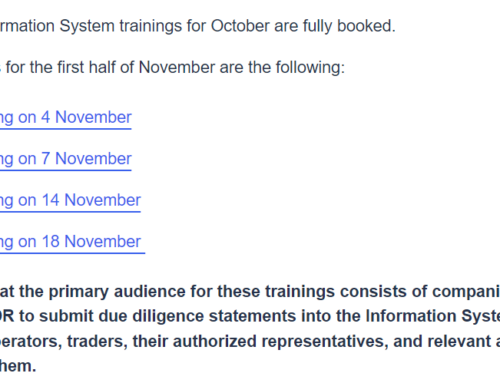
The European bioeconomy in 2050: four foresight scenarios
The Commission’s 2020 Strategic Foresight Report mentions the potential of a sustainable bioeconomy, to transform Europe’s agricultural and industrial base and create new jobs, whilst enhancing our natural resources and ecosystems.
In collaboration with DG Research and Innovation, the Joint Research Centre has created an ad-hoc network of research experts to contribute to the EC’s Knowledge Centre for Bioeconomy with forward-looking analyses. A team of six core experts have built – upon intelligence from more than 50 additional specialists from across the policy, civil society, industry and academia domains – four alternative scenarios for the EU bioeconomy in 2050.
Vice-president Maroš Šef?ovi? for Interinstitutional Relations and Foresight said: "Strategic foresight helps identify future challenges and ways to prepare for them, by supporting decision-making in an impactful way. Applied to bioeconomy, it is therefore vital, as we live in a world of limited resources. Deploying a sustainable and circular bioeconomy will help us create new bio-based value chains across Europe, while showing that prosperity and the health of our environment can go hand in hand."
Mariya Gabriel, Commissioner for Innovation, Research, Culture, Education and Youth, said: "Policies addressing all sectors of activity are more robust if supported by collective intelligence. The foresight process carried out by the European Commission provides scenarios alongside the opportunities and challenges they represent and helps to shape the future we want. This study by the Joint Research Centre is an important contribution and I invite all to enjoy the reading."
The scenarios
The scenarios describe plausible alternative narratives of the bioeconomy in 2050, based on the multiple drivers that can affect its future, and their interplay, and depending on the realisation of specific boundary conditions. Each scenario describes the world, Europe and the bioeconomy in 2050 and to what extent each scenario would contribute to the objectives of the EU Bioeconomy Strategy and to selected United Nations Sustainable Development Goals (SDGs).
- Scenario 'Do it for us': A consistent and coherent set of policies is designed, and implemented to foster radical change in the supply systems, but society resists significant changes in demand (consumption) away from Business As Usual (BAU).
- Scenario 'Do it together': Both the political system and society are aligned to achieve the climate-neutrality goal and the SDGs. Businesses quickly adapt and are part of the change. The transformative process includes all actors.
- Scenario 'Do it ourselves': The political system shows an incapacity to implement significant climate and SDG policies. However, consumers change their attitudes and behaviour under the thrust of increasingly influential social movements and the aftermath of a series of dramatic crises. Subsequently, the resulting change in demand (both patterns and levels) drives the supply system to adapt.
- Scenario 'Do what is unavoidable': Lifestyles do not change significantly from BAU patterns (but consumption levels rise), and the political system is not able or supportive to implement/enforce proactive policies, limiting itself to adopt – with some delay – measures in reaction to crises.
The JRC and DG Research and Innovation plan to explore further these scenarios, in order to facilitate and strengthen strategic and systemic reflections amongst key stakeholders of the European Bioeconomy.
Further information: HERE
Source: EU Commission
Related Posts
Contact
EUROPEAN ORGANISATION
OF THE SAWMILL INDUSTRY AISBL
Rue Montoyer 24/box 20
BE-1000 Brussels
Tel.: +32 2 287 08 68
Email: info@eos-oes.eu



